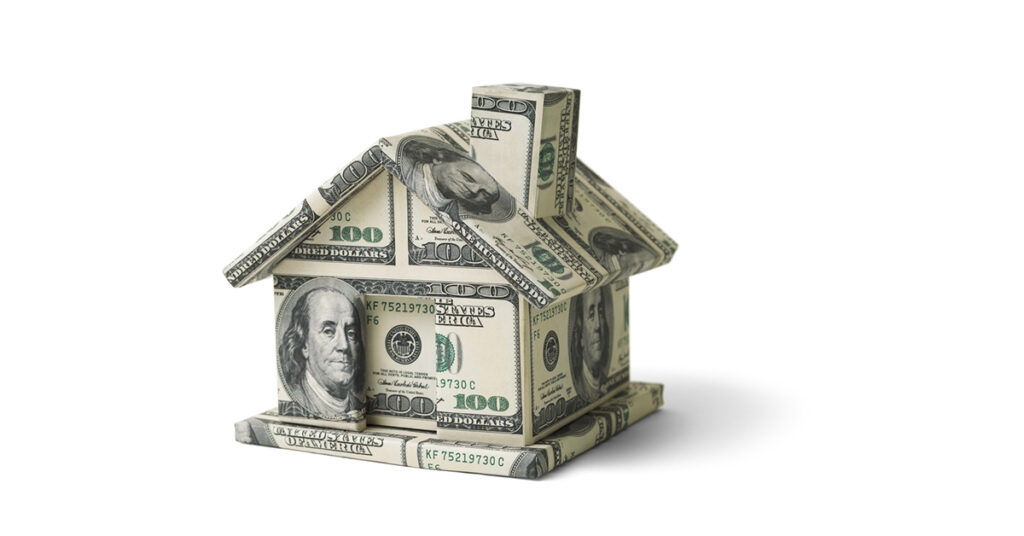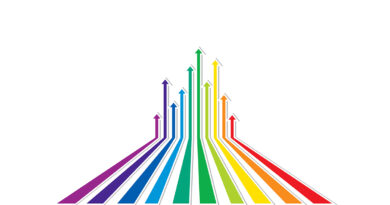Despite Coronavirus Pandemic, Typical Seller Profit Margin Reaches New High Nationwide
ATTOM Data Solutions released its second-quarter 2020 U.S. Home Sales Report, which shows that home sellers nationwide realized a gain of $75,971 on the typical sale, up from the $66,500 in the first quarter of 2020 and from $65,250 in the second quarter of last year. The latest figure, based on median purchase and resale prices, marked yet another peak level of raw profits in the United States since the housing market began recovering from the Great Recession in 2012.
The typical $75,971 home-sale profit represented a 36.3 percent return on investment compared to the original purchase price, up from 34.5 percent in the first quarter of 2020 and from 33.7 percent a year ago, to another post-Recession high.
The latest increases in profits and profit margins came as median home prices increased, year over year, in almost every market around the country with enough data to analyze. They rose by at least 5 percent in more than half the markets analyzed.
Prices and returns rose despite the economic damage caused by the worldwide Coronavirus pandemic, which has put millions of people out of work in the United States and remains a threat to the stability of the housing market.
“The housing market across the United States pulled something of a high-wire act in the second quarter, surging forward despite the encroaching economic headwinds resulting from the Coronavirus pandemic. Profit margins hit new records as prices kept climbing, with few indications that the impact of the virus would topple the market,” said Todd Teta, chief product officer at ATTOM Data Solutions. “No doubt, a lot of the ongoing prosperity resulted from gains seen before the pandemic started racing through the country in February and March. Indeed, there have been recent signs of prices flattening out or dropping across significant parts of the country, and the economic toll from the virus continues to be a major issue. But the second quarter results showed continuing strength in most parts of the nation.”
Profit margins climb in nearly all major metro areas
Typical profit margins – the percent change between median purchase and resale prices – rose from the second quarter of 2019 to the second quarter of 2020 in 81 (78 percent) of 104 metropolitan statistical areas around the United States with sufficient data to analyze. Metro areas were included if they had at least 1,000 single-family home and condo sales in the second quarter of 2020.
The biggest annual increases in profit margins came in Spokane, WA (margin up from 61.2 percent to 76 percent); Columbus, OH (up from 34 percent to 47 percent); St. Louis, MO (up from 19.9 percent to 31.4 percent); Chattanooga, TN (up from 31.9 percent to 43.4 percent) and Indianapolis, IN (up from 30.5 percent to 41.9 percent).
Aside from Columbus, St. Louis and Indianapolis, the biggest increases in metro areas with a population of at least 1 million were in Rochester, NY (up from 24.1 percent to 34.2 percent) and Kansas City, MO (up from 38.6 percent to 48.6 percent).
Profit margins dropped in 23 of the 104 metro areas analyzed (22 percent). The biggest decreases were in Pittsburgh, PA (down from 28.6 percent to 20.9 percent); Modesto, CA (down from 58.7 percent to 51.1 percent); Honolulu, HI (down from 43.8 percent to 36.2 percent); Greeley, CO (down from 41.5 percent to 35.4 percent) and Naples, FL (down from 22.1 percent to 16.7 percent).
The biggest decreases in metro areas with a population of at least 1 million, aside from Pittsburgh, were in Denver, CO (down from 49.1 percent to 44.4 percent); Grand Rapids, MI (down from 52.8 percent to 49.3 percent); San Francisco, CA (down from 73.3 percent to 70 percent) and Boston, MA (down from 51.2 percent to 48.3 percent).
Most metro areas seeing home values rise
Despite the economic damage caused by the Coronavirus pandemic, median home prices in the second quarter of 2020 rose, year over year, in 97 of the 104 (or 93 percent) metropolitan statistical areas analyzed in the report. Metro areas were included in this report if they had at least 1,000 single-family and condominium sales in the second quarter of 2020. The average increase in the median home price from the second quarter of 2019 to the second quarter of 2020 was about 6 percent.
The biggest year-over-year increases in median home prices during the second quarter of 2020 came in these metro areas: Detroit, MI (up 27.2 percent), Boise, ID (up 17.5 percent); Spokane, WA (up 16.2 percent), New Haven, CT (up 14.4 percent) and Birmingham, AL (up 13.3 percent).
Along with Detroit and Birmingham, major metro areas with a population of at least 1 million and at least a 10 percent annual increase in home prices in the second quarter of 2020 included Virginia Beach, VA (up 12.8 percent); Baltimore, MD (up 12.3 percent); Tampa, FL (up 11.9 percent); Phoenix, AZ (up 11.6 percent) and Indianapolis, IN (up 11 percent).
Homeownership tenure stays near record high nationwide, but dips in majority of country
Homeowners who sold in the second quarter of 2020 had owned their homes an average of 7.95 years, up slightly from 7.85 years in the previous quarter and virtually same as the peak of 7.96 years in the fourth quarter of 2019.
Among metro areas with sufficient data, 58 saw declines in average tenure from the first quarter of 2020 to the second quarter of 2020 (55 percent). They were led by Torrington, CT (down 10.9 percent); Yakima, WA (down 9.8 percent); Gainesville, FL (down 7.2 percent); Honolulu, HI (down 6.8 percent) and Springfield, MA (down 6.4 percent).
The 25 longest average tenures in the second quarter of 2020 were again all on the East Coast or West Coast, with the top five in Connecticut: Norwich (12.84 years), Bridgeport (12.39 years), New Haven (12.21 years), Hartford (12.01 years) and Torrington (11.67 years).
The smallest tenures during the second quarter of 2020 were in Colorado Springs, CO (6.29 years); Oklahoma City, OK (6.59 years); Grand Rapids, MI (6.79 years); Denver, CO (6.83 years) and Minneapolis, MN (6.94 years).
Cash sales hit lowest point in 13 years
Nationwide, all-cash purchases accounted for 23.4 percent of single-family home and condo sales in the second quarter of 2020, down from 26.6 percent in the first quarter of 2020 and from 24.4 percent in the second quarter of 2019, to the lowest level since the third quarter of 2007.
Among metropolitan statistical areas with a population of at least 200,000 and sufficient cash-sales data, those where cash sales represented the smallest share of all transactions in the second quarter of 2020 were Seattle, WA (9.6 percent); Bellingham, WA (9.6 percent); Vallejo, CA (9.8 percent); Colorado Springs, CO (11.6 percent) and Portland, OR (12.3 percent).
U.S. distressed sales at 14-year low
Distressed home sales — including bank-owned (REO) sales, third-party foreclosure auction sales and short sales — accounted for 8 percent of all U.S. single-family home and condo sales in the second quarter of 2020, down from 9.7 percent in the prior quarter and from 10.9 percent a year earlier. The latest figure marked the lowest point since the third quarter of 2006 and is less than one-fifth of the peak level of 45.2 percent in first quarter of 2009.
Among metropolitan statistical areas with a population of at least 200,000 and sufficient data, those where distressed sales represented the largest portion of all sales in the second quarter of 2020 were Atlantic City, NJ (22.8 percent); Peoria, IL (20.6 percent); Norwich, CT (20.6 percent); New Haven, CT (19.2 percent of sales) and Chico, CA (18.8 percent).
Metro areas with a population of at least 1 million that had the highest levels of distressed sales in the second quarter of 2020 were Hartford, CT (18.8 percent of sales); Providence, RI (17.3 percent); Baltimore, MD (13.8 percent); Cleveland, OH (13.1 percent) and St. Louis, MO (12.3 percent).
Metros with the smallest shares of total distressed sales were Austin, TX (3.3 percent of sales); Seattle, WA (3.6 percent); San Francisco, CA (4 percent); San Diego, CA (4.3 percent) and Dallas, TX (4.4 percent). All five of those have at least 1 million people.
States where distressed sales comprised the largest portion of total sales in the second quarter of 2020 were Connecticut (18.2 percent of all sales), Rhode Island (16.6 percent), New Jersey (13.2 percent), Maryland (12.9 percent) and Illinois (12.8 percent).
Counter to the national trend, the share of sales represented by properties in distress increased annually in the second quarter of 2020 in just four states with enough data to analyze: Iowa (up from 7.2 percent to 10.3 percent), Kentucky (up from 7.4 percent to 9.2 percent), Massachusetts (up from 9.4 percent to 11.4 percent) and New Hampshire (up from 11.2 percent to 11.4 percent).
Institutional investment drops further, to new 20-year low
Institutional investors nationwide accounted for 1.4 percent of all single-family home and condo sales in the second quarter of 2020, down from 2.2 percent in the first quarter of 2020 to another new low point since at least 2000.
Among states with enough data to analyze, those with the smallest percentages of sales by institutional investors in the second quarter of 2020 were Oregon (0.5 percent of sales), Virginia (0.5 percent), New Jersey (0.6 percent), Texas (0.7 percent) and Michigan (0.8 percent).
States with the largest levels of sales by institutional investors in the second quarter of 2020 were Arkansas (3 percent of sales), Georgia (3 percent), Alabama (2.8 percent), Oklahoma (2.5 percent) and North Carolina (2.3 percent).
Texas and California metro areas continue to have highest levels of FHA loans
Nationwide, buyers using Federal Housing Administration (FHA) loans accounted for 12.5 percent of all single-family home and condo purchases in the second quarter of 2020, up from 12.3 percent in the previous quarter and from 11.6 percent a year earlier.
Among metropolitan statistical areas with a population of at least 200,000 and sufficient FHA- buyer data, those with the highest levels of FHA buyers in the second quarter of 2020 were Amarillo, TX (30.6 percent of sales); McAllen, TX (29.4 percent); Merced, CA (29.3 percent); El Paso, TX (29 percent) and Bakersfield, CA (27.8 percent).

The Place for Lending Visionaries and Thought Leaders. We take you beyond the latest news and trends to help you grow your lending business.



